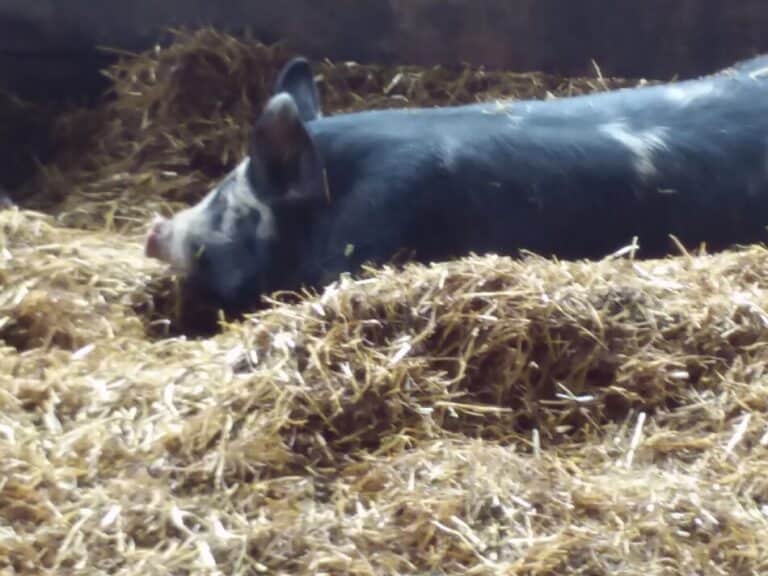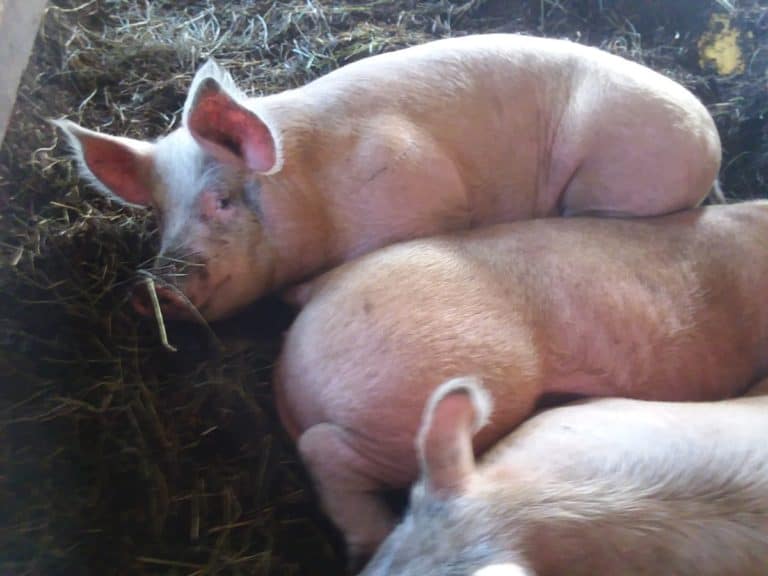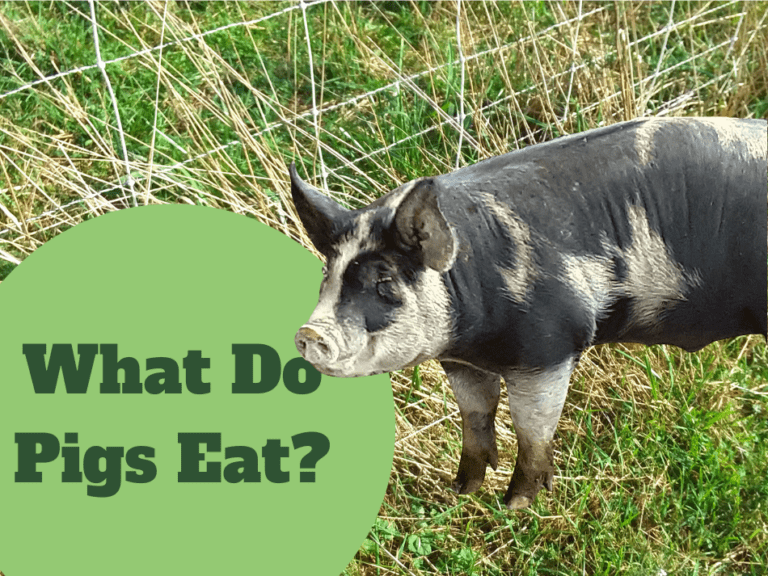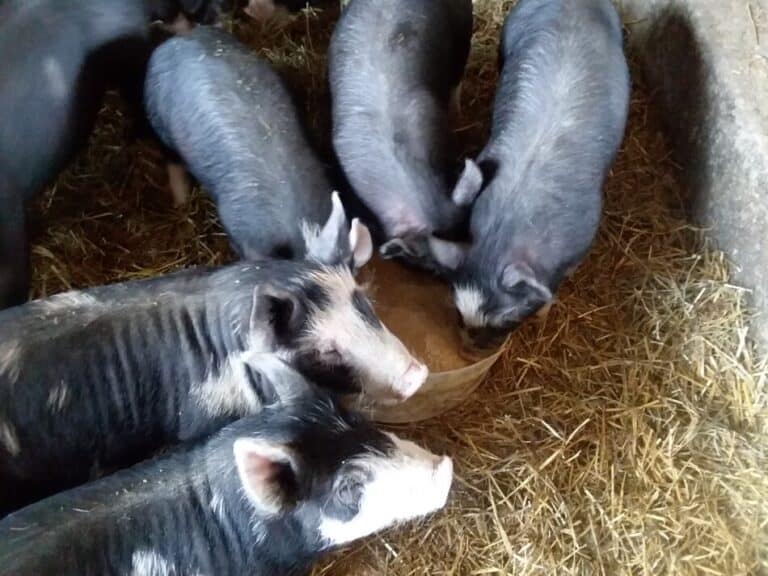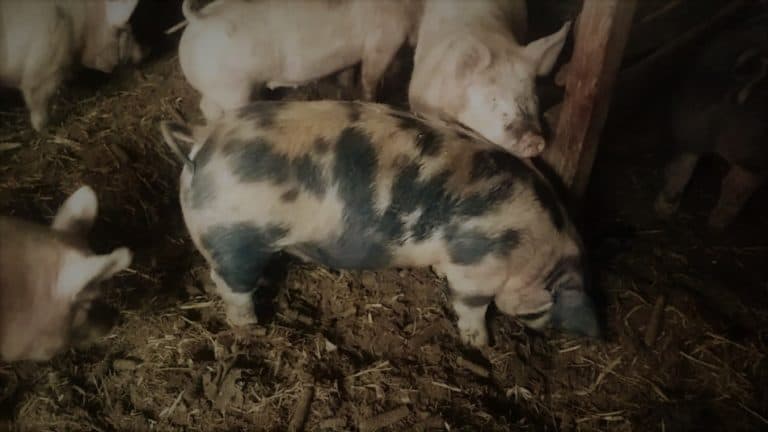Raising Pigs For Meat? 9 things you need to know!

Where do you even start when you are looking for information on raising a few feeder pigs? Sure, there’s a lot of information out there, but some of it’s confusing and, frequently, it’s contradictory!
Here are the important things you need to know that folks tend to gloss over, or just plain leave out, that are keys to successfully raising your own pigs.
Beginners should start with crossbred feeder pigs
Since this is your first time raising pigs, start with crossbred feeder pigs. These piglets will gain well and be easy keepers.
Feeder pigs are pigs that are well weaned, meaning they have been in their own pen without mom for a week or so, and ready to go to your place and grow.
Crossbred means a mix of two or more breeds of parent pigs. Crossbred pigs will be hardy and grow faster for you than purebred piglets.
Best Pig For Beginners goes more into breed selection and why crossbred pigs are your best pick.
When you cross two or more breeds together, you get the strongest traits of each parent showing in the piglets. This is called hybrid vigor and it’s great news for you!
It would be remiss of me to not mention this: crossbreeding will not fix poor management or junky genetics. You must get high quality feeder pigs to start with if you want fast growing, easy keepers.
High quality feeder pigs will perform better for you
High quality feeder pigs will be healthier and easier to care for than low quality feeder pigs.
High quality feeders are also likely to cost you a bit more money to purchase, but they are worth it! Better pigs have a higher feed efficiency, which means more growth for your money spent on pig feed.
I know it can be tempting to buy cheap or “deal” pigs, but don’t. They are not cheap, at all, when you figure in your time and costs to get that supposedly cheap pig to market weight!
What should you look for in a high quality feeder pig? Read my article Best Time To Get Feeder Pigs.
Pigs should be raised in the buddy system
You’ll want to get two, preferably three, feeder pigs. Pigs like to be raised with a buddy and, for pigs, a group of three is better than a group of two.
Once you get everything together, I mean the feeder, waterer and pen or pasture area, having two or three piglets won’t matter much to you, as far as taking care of them goes.
But, it will matter a lot to the health and happiness of the piglets to have buddies.
Feed will be your largest expense per group of pigs
Your largest cash expense while raising pigs will be the feed. It will cost you more than the pigs, themselves! Run the numbers and see what you should plan on spending in total for their feed.
The other thing to keep in mind, regarding pig feed is that as the pigs get bigger, they also eat more feed per day.
This means you’ll be filling the feeder more frequently for big pigs than you did when they were small.
No surprise there, of course, just keep in mind you’ll need to either get more feed per trip as the pigs get bigger or make more frequent trips to the feed store to keep those porkers eating.
The importance of plentiful water for pigs is often overlooked
So often we talk about what breed of piglets and what feed but completely forget about the importance of water. Water is actually more important than feed.
Water needs of pigs, MSU Extension, sites that growing pigs need 3-5 gallons of water each per day. 3 gallons is for feeder pigs and closer to 5 gallons for finishing pigs, since they are so much bigger.
If you want your pigs to grow to their potential, you must not limit their water. Limiting water limits growth.
Check the pig’s water twice a day.
Things happen, the pigs spill the water barrel, it gets plugged, you forgot to top it off this morning, etc. and now your porkers are out of water. No water equals uncomfortable pigs that are not growing.
How do you tell if the waterer is working? I just look at the level of water in the top. If it goes down a few inches each day, they are getting water.
If the water level is the same as your last water check, better see what’s going on.
If I end up in the pen anyway, I tend to test the waterer while I’m in there. If I don’t need to go into the pen, then I just listen for them to drink. When I hear them sip the water, I know it’s working.
If I see them try the waterer, but get nothing, then walk away I’ll hop in and see what is up. It’s usually a piece of hay that gets sucked into the nipple, and once removed, things are fine.
Unusual breeds of pigs will take longer to grow and cost more to buy
Unusual or rare breeds of pigs are getting more attention these days, but something you should steer clear of until you get some pig experience.
These unusual or rare pigs are rare for a reason, which is usually production based, meaning they are slow growers.
If you want your pigs to grow in the 4-4.5 month time frame from feeder pig to finished hog, get crossbred piglets. Rare or unusual breeds will not be able to finish on time.
Rare or unusual pigs will also cost more to buy, I’d say plan to spend double the price of a normal feeder pig in your area.
Neither of these challenges, cost or time to finish, are problems if you are happy with the results, just know ahead of time and plan accordingly.
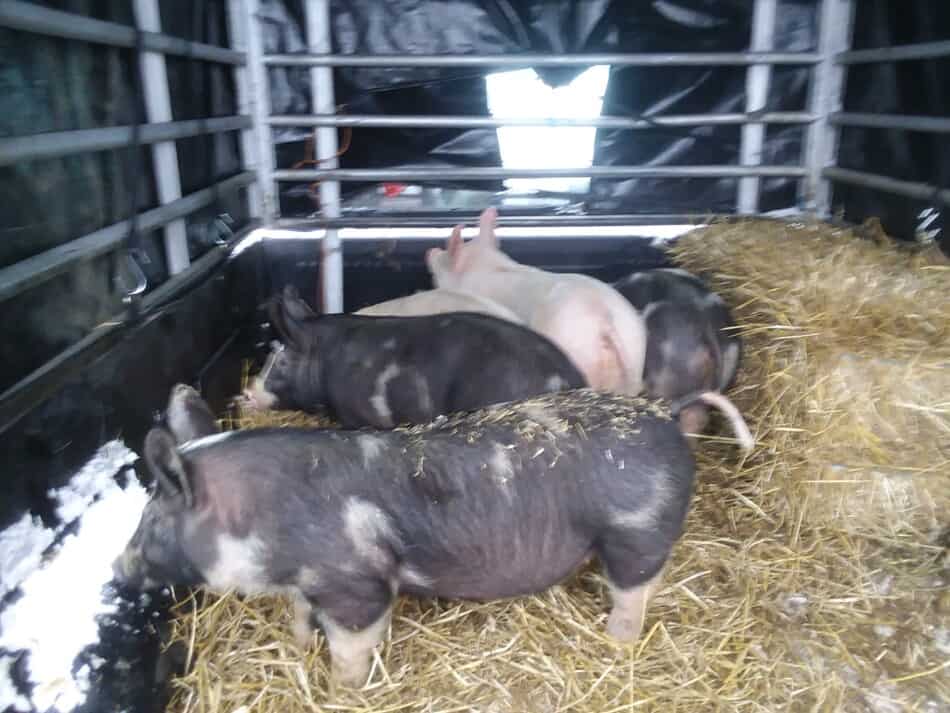
Pigs can be raised any time of year
For some reason, no one mentions that pigs can be raised anytime of year. Everyone tells you to get your feeder pigs in the spring, when prices are the highest, since tons of folks are all wanting pigs early.
Of course, you need to get pigs in the growing season, if you want to have your pigs on pasture, but other than that, you can have pigs any time of year.
I don’t like dealing with frozen water, so for me late December through early March are not super, but the rest of the year is great for pigs.
Consider raising pigs to finish earlier in the year, like early to mid February, which would have them finishing in early to mid June.
Or go the other way with getting the piglets in July and have them finishing in November.
Whatever dates you choose, the time to raise your pigs will be the same 4-4.5 months. Look on the calendar and see what you could do in your area other than joining in the spring rush for piglets.
To be clear, there is nothing wrong with getting piglets in the spring.
It’s just that everyone is doing that and it causes short supply and higher prices when piglets born the rest of the year would be less expensive and work great, too.
Have the processing appointment set up first, before buying pigs
It used to be you could just call a month or so ahead of when you wanted an appointment and the processor could fit you in. That’s not the case anymore, not even close!
Now you need to be making your appointment before you buy the piglets! No joke.
I know of some places that are booked out for the year, meaning you’d need an appointment for a pig that isn’t even born yet!
When Is Your Pig Ready To Butcher? gives you a few specific things to look for on your pig to know if it is well marbled and ready for the freezer.
Of course, you can butcher your own pig at home, (that’s what we do) but that’s something you want to plan ahead of time, not end up thrown into because you can’t get an appointment!
If home butchering sounds interesting to you and you are a deer hunter, you’re set, you’ll just need a loader to hoist the pig.
If you have no hunting experience, home butchering will be hard to jump into without knowledgeable help.
Pigs are very food motivated, use this to your advantage
Pigs love to eat and will be motivated by food. This means you need to keep the feeder and waterer full. When your pigs are out of feed, the will work really hard to get out and find some.
It’s far easier to keep them in, than to catch them once they are out. Keep the feeder full.
The other way you might want to use feed is to load your pigs. If you give them feed in a pan in various places in their pen, they’ll learn to come for feed.
When you need to load them, keep them off of feed the night before then give them the pan of feed in a small pen next to the loading area.
They’ll go into the small pen for the feed, then you shut them in and open the gate to the trailer. The lower the trailer deck is the easier this will go!
Take the pan and put it up in the trailer or just take it away and wait for the pigs to get curious enough to hop in the trailer.
Of course, you could load them by pushing and shoving if you want, but for anyone who prefers boring, calm pig loading, consider planning it out and using feed!
Resources:
Water needs of pigs, Michigan State University Extension, by Tom Guthrie, I took the 3 and 5 gallon figures sited above from a chart in this article and combined them into a range of 3-5 gallons depending upon size of pig

